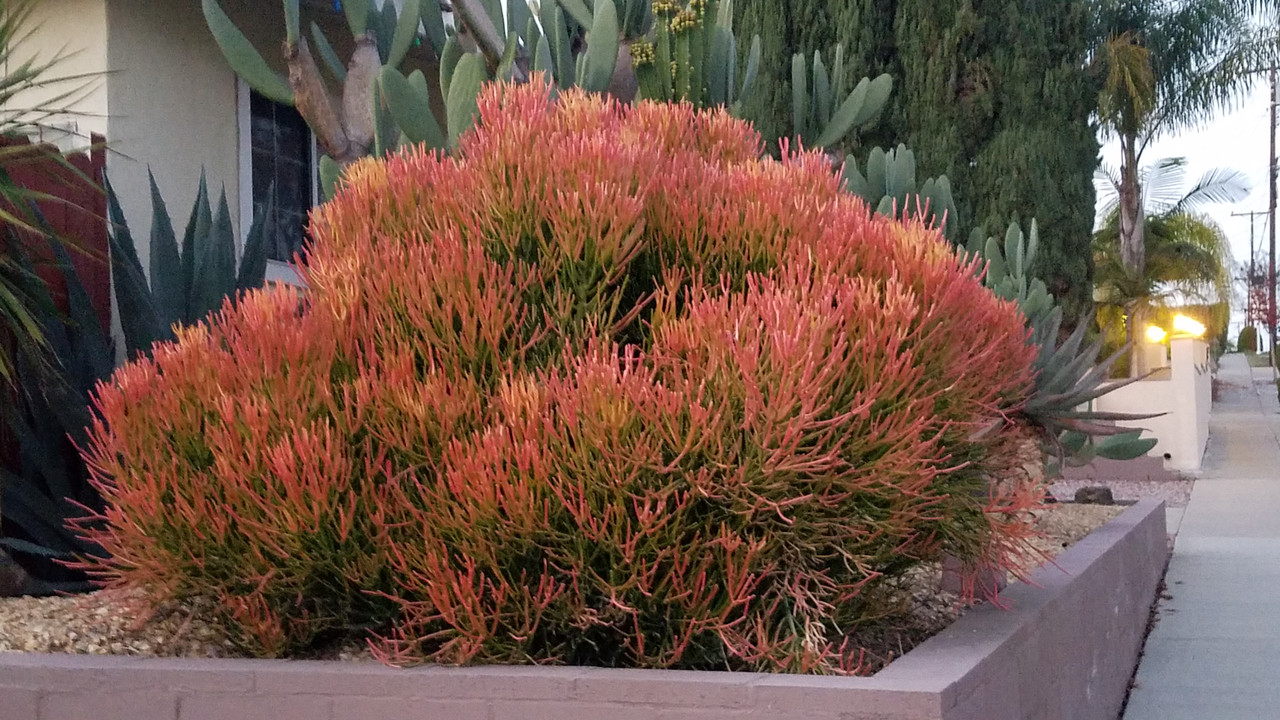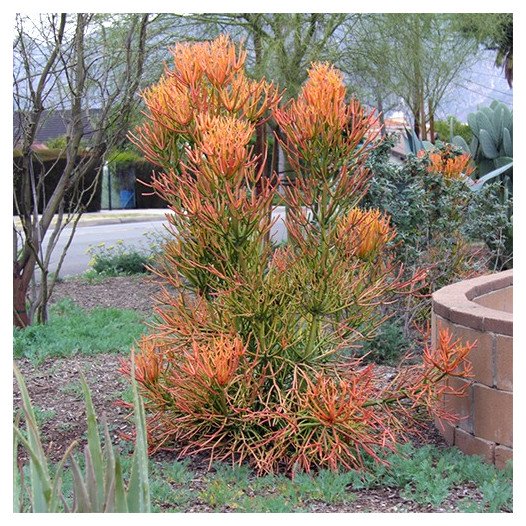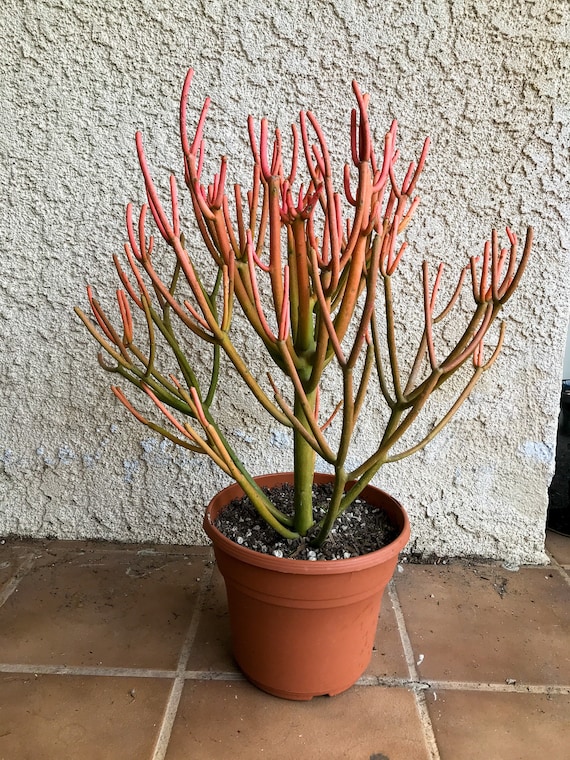This bright, colorful succulent has hues of red, pink, orange and yellow stems. It makes an attractive addition to succulent arrangements, but should not be planted where there is a lot of pedestrian traffic, as it is toxic. It is well-suited for container gardens.
Table of Contents
Care and Propagation Information
Adding Euphorbia tirucalli ‘Sticks on Fire’ to your outdoor succulent garden can be a great way to add some visual interest, but caution should be taken due to its toxicity. Read up on poisonous succulents before deciding to plant this species in your garden.
This succulent is not attractive to deer or rabbits.
Watering
Sticks on Fire requires the same amount of water that is typical for most succulents; it is best to use the “soak and dry” technique and let the soil dry out completely before watering again.
Where to Plant
Euphorbia tirucalli is ideal for pots and planters. It has a rapid growth rate, so it may require more frequent repotting than other types of succulents. During the wintertime, it will have the most vibrant colors.
Put a plant in a space of your garden that is exposed to 4 – 6 hours of direct sunlight each day.
How to Propagate Euphorbia tirucalli ‘Sticks on Fire’
To propagate this succulent, Euphorbia tirucalli ‘Sticks on Fire’, it is best to use stem cuttings. Keep in mind that this plant is toxic, so take proper precautions when handling it.
Cuttings
‘Sticks on Fire’ can be propagated from cuttings; however, it is important to remember that this succulent is poisonous, so extra caution must be taken when handling it.
Put on nitrile dip gloves and use a sharp knife to cut a stem near the bottom of the plant in order to propagate it.
Wait a few days for the stem to form a protective layer before planting it in soil that drains easily.
Care and Propagation Information
General Care for Euphorbia tirucalli ‘Sticks on Fire’
This succulent is not attractive to deer or rabbits.
Watering
Sticks on Fire requires the same amount of water that is typical for most succulents; it is best to use the “soak and dry” technique and let the soil dry out completely before watering again.
Where to Plant
Euphorbia tirucalli is ideal for pots and planters. It has a rapid growth rate, so it may require more frequent repotting than other types of succulents. During the wintertime, it will have the most vibrant colors.
Put a plant in a space of your garden that is exposed to 4 – 6 hours of direct sunlight each day.
How to Propagate Euphorbia tirucalli ‘Sticks on Fire’
To propagate this succulent, Euphorbia tirucalli ‘Sticks on Fire’, it is best to use stem cuttings. Keep in mind that this plant is toxic, so take proper precautions when handling it.
Cuttings
‘Sticks on Fire’ can be propagated from cuttings; however, it is important to remember that this succulent is poisonous, so extra caution must be taken when handling it.
Put on nitrile dip gloves and use a sharp knife to cut a stem near the bottom of the plant in order to propagate it.
Wait a few days for the stem to form a protective layer before planting it in soil that drains easily.
FAQ
How do you care for Euphorbia sticks of fire?
The best way to keep a firestick plant healthy is to make sure the soil is completely dry before watering. Allow the top soil layer to dry to a depth of at least 2” before watering. When watering, do so thoroughly until water drains from the bottom of the pot, then discard any excess. Avoid keeping the soil soggy or wet at all times.
How tall does Euphorbia sticks on fire get?
This hardy plant typically reaches 4-8 feet in height and width (120-240 cm) when planted in the ground in full sunlight in areas that have minimal frost and high temperatures. It is also generally resistant to pests, diseases, and salt, as well as deer and rabbits, making it low-maintenance and easy to care for.
Does Firestick plant like sun or shade?
In other words: direct sunlight
What are the dangers of fire stick plants?
Eating Euphorbia Tirucalli (commonly known as firestick cactus, pencil tree, pencil cactus, or milk bush) can cause irritation in the mouth and stomach, as well as pain and diarrhea. Poison control centers label this plant as a chemical skin irritant.



